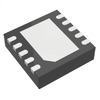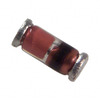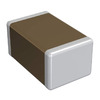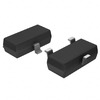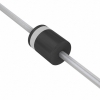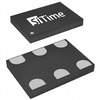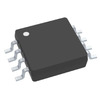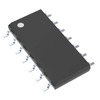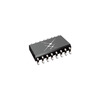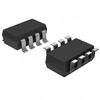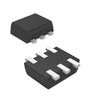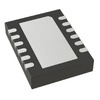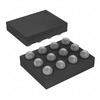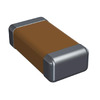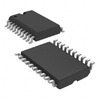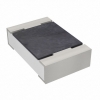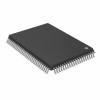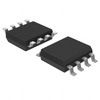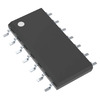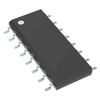The Ultimate Guide to Function Generators
In electronics testing and signal simulation, function generators are requisite tools, offering unparalleled versatility and precision. From crafting diverse waveforms like sine, square, and pulse signals to enabling advanced functionalities like frequency sweeping and voltage-controlled generation, these devices empower you. This article dives into function generators' intricate workings and applications, exploring their design principles, performance characteristics, and modern advancements. Whether you’re fine-tuning circuits, analyzing system behavior, or innovating in telecommunications, this guide sheds light on the subtleties and strengths that make function generators a cornerstone of electronic experimentation and development.Catalog

Feature and Specifications
|
Section |
Details |
|
Signal Generation |
Produces triangle, square, sine, pulse, and single pulse
waves; supports TTL and DC voltage levels. |
|
Output Amplitude |
Adjustable from 1 mV to 25 Vp-p with 50Ω ±10% output
impedance. |
|
Frequency Display |
3-digit display for output frequency; range: 0.2 Hz to 2
MHz with ±1% frequency error. |
|
Power Output Frequency |
Range: 0.2 Hz to 200 kHz; minimum output of 10W and
no-load voltage up to 25 Vp-p. |
|
External Frequency Measurement |
Measures frequencies from 0.1 Hz to 10 MHz with ±0.1%
accuracy. |
|
Attenuation Settings |
Adjustable settings: 0 dB, -20 dB, -40 dB, -60 dB. |
|
DC Level Range |
Adjustable between +10V and -10V. |
|
Duty Cycle Variance |
Adjustable from 10% to 90%. |
|
Distortion Levels |
≤2% over a frequency range of 20 Hz to 20 kHz. |
|
Square Wave Performance |
Rise time ≤50ns; TTL square wave output ≥3 Vp-p. |
|
External Voltage Control |
Rise time ≤25ns; input level: 0–10V; output frequency
ratio: 1:100. |
|
Power Supply |
Operates on 220V ±10% at 50Hz–60Hz. |
|
Dimensions |
240(W) × 90(H) × 280(D) mm. |
|
Weight |
Approximately 2.5 kg. |
|
Output Protection Circuit |
Shields the output to ensure longevity and reliability of
both the generator and connected modules. |
Operations
Building function generators often involves an intricate dance with discrete components, posing challenges like sporadic low-frequency output and cumbersome instability that tangle the debugging journey. These intricate devices typically integrate general-purpose elements such as transistors and operational amplifiers or occasionally embrace the sophisticated allure of specialized function signal generator integrated circuits (ICs). The early iterations, like the L8038 and XR2207/2209, could only dream of expansive functionality, precise operation, and frequencies exceeding 300 kHz, while also yearning for flexible adjustment opportunities.
The horizon broadened with the advent of monolithic integrated marvels like the MAX038, courtesy of Maxim, marking a transformative leap in functionality. These contemporary ICs masterfully orchestrate the generation of multiple waveforms, cater to increased frequencies, and gracefully simplify debugging. Noted especially for its elevated frequencies and precise accuracy, the MAX038 elegantly lends itself to numerous applications spanning phase-locked loops, voltage-controlled oscillators, frequency synthesizers, and pulse width modulators. This high-tech evolution weaves a narrative that subtly emphasizes the ongoing pursuit of innovation, inherently influencing the dependability and adaptability of signal generation.
Moreover, the advent of direct digital synthesis (DDS) chips paints an intense picture of progress, enabling the creation of arbitrary waveforms at soaring frequencies. The punchy price tag of such technology finds its worth in the arena of heightened performance and adaptability, unlocking doors to sophisticated applications and enriched testing scenarios.
Various test signal instruments are categorized by the waveforms they manufacture, each waveform serving a distinct role in an array of testing environments:
• Sinusoidal Signal Generators: An invaluable tool for dissecting frequency response, distortion, gain, and sensitivity over a sweep of frequencies. Mastery of these elements is used for maintaining the fidelity and performance of electronic systems, drawing upon your desire for accuracy.
• Function (Waveform) Signal Generators: Crafted for the creation of particular periodic waveforms, these generators are requisite in communication and control systems. Their operational prowess stretches from microhertz to several tens of megahertz, mirroring the complex demands of modern electronic testing, and echoing your quest for versatility.
• Pulse Signal Generators: These instruments deliver adjustable rectangular pulses, perfect for scrutinizing linear systems and radar performance. The flexibility to tailor pulse attributes allows you to imitate various operational scenarios, bolstering the depth and strength of system evaluations, and sating the inherent desire for precision in testing.
• Random Signal Generators: By generating noise signals that replicate actual dynamics, these generators serve as a major ally in exhaustive system performance analysis. Integrating random signals aids you in predicting system behavior under unexpected conditions, ultimately paving the path toward designs that resonate with reliability and foresight.
Signal Generator Insights
Signal generators are utilized across diverse domains, with the main categories being function signal generators and arbitrary waveform generators. Function generators are split into analog and digital synthesis varieties, with digital signal sources typically offering enhanced frequency precision, amplitude stability, and signal-to-noise ratio (S/N) compared to their analog counterparts. Digital designs frequently harness phase-locked loop (PLL) technology, which bolsters output signal stability by curbing phase jitter and frequency drift. However, the fusion of digital circuits with analog components can present complications, especially regarding small signal outputs, which demands meticulous design strategies.
The analog function signal generator structure generally includes a triangular wave generator coupled with a diode-based sine wave shaping circuit, and comparators are used to generate square waves. The triangular waveform is produced by consistently charging a capacitor, giving rise to ramp waveforms. Adjusting the charging speed alters the output frequency. Furthermore, the duty cycle can be varied by modifying pulse width or adjusting both frequency and duty cycle together. This adaptability suits a range of uses, from basic waveform creation to sophisticated signal modulation.
Power Amplifier Design Details
In signal generation, the power amplifier (PA) design is requisite, beginning with an operational amplifier leading into a push-pull amplifier setup. This arrangement aims to diminish cross-distortion, safeguarding signal integrity before reaching the attenuation network. Major performance aspects for a signal generator include the signal-to-noise ratio, rapidity of square wave rise times, and frequency response characteristics. A superior signal source reliably provides an elevated S/N ratio, swift rise times, and superior linearity. The complex nature of these circuits emphasizes experiential knowledge and iterative testing, which are invaluable for identifying and resolving issues like oscillation that may disrupt signal fidelity.
Attenuation and Output Impedance Strategies
Post-amplification, the signal undergoes attenuation through a resistive network, fulfilling the ultimate role in the waveform generator's function. This network is crafted to sustain a stable output impedance, setting it apart from conventional voltage divider circuits that might lack consistent performance. The meticulous design of this network ensures stable output across varying load conditions, boosting the signal generator's reliability in actual applications.
Functionalities of Modern Waveform Generators
Modern waveform generators are equipped with a multitude of complex features that greatly expand their applicability in both research and practical settings. These include frequency sweeping, voltage-controlled generation (VCG), TTL compatibility, triggering abilities, and an integrated LCD for immediate frequency feedback. Together, these capabilities empower users to achieve detailed and dynamic signal generation, enhancing exploration and innovation in fields such as telecommunications, electronic testing, and educational environments.
Frequency Sweeping
With frequency sweeping, the generator emits signals that traverse a predefined frequency spectrum, which proves remarkably beneficial when examining the frequency response of circuits and components. As the frequency is modulated incrementally, you can gain valuable insights into how a device reacts under varying conditions, shedding light on its core performance characteristics. You can often exploit this function to pinpoint resonant frequencies in filters or to evaluate the bandwidth efficiency of amplifiers. The tangible process of tuning instruments during live experiments unveils subtleties often missed by notional predictions.
Voltage-Controlled Generation (VCG)
Voltage-controlled generation allows the waveform generator to create signals modifiable by external voltage sources, used for applications like synthesizers and modulation schemes in communication networks. By observing the effects of altering input voltages on the output waveform, you can craft sophisticated signals that simulate actual scenarios. This cyclical process of tweaking parameters and assessing outputs fosters a richer comprehension of signal dynamics and system interactions.
TTL Compatibility
The inclusion of TTL (Transistor-Transistor Logic) compatibility ensures that the waveform generator interfaces effortlessly with digital circuits, allowing for the synthesis of digital signals capable of triggering other devices or systems. This makes the generator an invaluable asset in the development and troubleshooting of digital electronics. Experience emphasizes the need to maintain signal integrity during transitions, highlighting the significance of employing TTL-compatible generators to synchronize signals between devices effectively.
Triggering Abilities
The integration of triggering capabilities augments the waveform generator's utility by enabling it to emit signals in alignment with external occurrences. This function is requisite in settings demanding precise timing, such as oscilloscope analyses or coordinated testing configurations. You can utilize this functionality to capture fleeting events or orchestrate multiple instruments, thereby refining the precision of their experiments. Mastering the distinction of timing in signal generation mandates practical involvement, where you refine trigger levels and conditions through immersive experimentation.
LCD Display for Frequency Feedback
An LCD display integrated into the waveform generator offers actual insights into frequency changes, facilitating prompt monitoring and fine-tuning. Beyond maintaining precision, this feature fortifies user assurance in measurement accuracy. The visual experience of tracking frequency alterations nurtures a more intuitive grasp of generator behavior. You can frequently note that a lucid display minimizes errors, enabling them to dig into the intricacies of their experimental work with greater focus.
About us
ALLELCO LIMITED
Read more
Quick inquiry
Please send an inquiry, we will respond immediately.

Altera FLEX Series: Comprehensive Guide to Programmable Logic Devices (PLDs)
on January 6th

LFSR Characteristics, Uses, and Key Features
on January 5th
Popular Posts
-

Understanding Power Supply Voltages in Electronics VCC, VDD, VEE, VSS, and GND
on June 13th 24175
-

USB-C Pinout and Features
on June 13th 21286
-

The Ultimate Guide to Wire Color Codes in Modern Electrical Systems
on January 1th 17465
-

TL494 Current-Mode PWM Controller IC
on January 1th 14733
-

Current Divider Circuits and Effective Use of the Divider Formula
on January 1th 13630
-

FET (Field Effect Transistor) Circuit Symbols
Field-Effect Transistors (FETs) are widely used in modern electronics and are found in everything from simple devices to complex digital systems. To work with these transistors effectively, it's helpful to understand the symbols that represent different types of FETs. These symbols do more than just show what the transistors look like—they also provide information about how each transistor works ...on January 1th 13440
-

Quality (Q) Factor: Equations and Applications
The quality factor, or 'Q', is important when checking how well inductors and resonators work in electronic systems that use radio frequencies (RF). 'Q' measures how well a circuit minimizes energy loss and impacts the range of frequencies the system can handle around its main frequency. In systems with inductors, capacitors, and tuned circuits, a higher 'Q' means the circuit focuses more on a spe...on January 1th 13393
-

Understanding and Building Op-Amp Based Peak Detectors
In the world of electronic circuit design, peak detectors are key tools for accurately analyzing and processing signal strengths. These circuits are designed to find and keep the highest signal amplitude, making sure the peak value is precisely captured and held as needed. Peak detectors are important in many fields, from improving audio quality in communication systems to aiding medical diagnoses...on June 13th 12497
-

LM741 Op-Amp: Features, Specifications, and Applications
The LM741 op-amp is a popular and flexible electronic component. This article goes over the pin layout, functions, specs, and different ways the LM741 can be used, while also comparing it to similar models like the LM358.Catalog1. What Is the LM741 Op-Amp?2. The LM741 Pin Configuration3. The LM741 Pin Functions4. Specifications of the LM7415. Features of LM7416. LM741 Circuit Applications7. LM741 ...on June 13th 12034
-

ST-LINK/V2: Pinout, Specifications, and Datasheet
This article takes you through the ST-LINK/V2, a well-regarded tool that amplifies connectivity and functionality. Key topics will cover its pinout configuration, delve into its 3D model, and spotlight specifications. Such understanding expands the horizons of STM microcontrollers in diverse applications. By grasping these interfaces and tools, you can transform embedded systems, opening doors to ...on January 1th 11579
